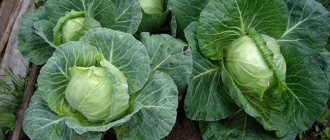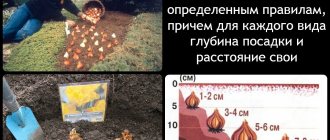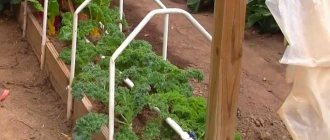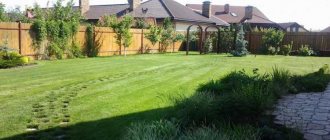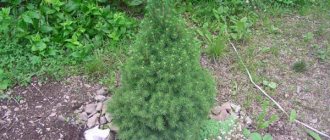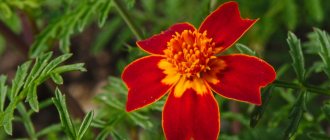Nowadays it is very fashionable to decorate the interiors of houses with green spaces. Preference is given to plants that do not shed their leaves and constantly delight with their beauty. One of these flowers is yucca. This is a southern flower, externally resembling a palm tree. On average, the height of this exotic plant can reach two meters. Yucca fits perfectly into any interior, especially if there is enough space in the house to accommodate it. Tropical greenery attracts the attention of guests and has a calming effect on the hosts. The main requirement for appearance is the need to periodically correct the shape of the plant, shortening or removing shoots protruding from the sides.
Why is pruning needed?
Trimming yucca at home allows you to give it a shape that matches the style of your home. Initially, a young plant is planted in a regular flower pot, but as it develops it begins to feel a lack of space, as a result the trunk becomes longer and the amount of greenery is reduced.
Evergreen yucca
There is a need to stimulate the branching process. To do this, the top is cut off, and after a while the crown becomes much more magnificent and beautiful.
Important! Like most tropical plants, yucca grows quickly. A small amount of soil cannot provide the root system with sufficient moisture and nutrients. If the stem is shortened, the problem will be solved.
If the plant becomes sick, it can be preserved by treating it with protective compounds. In addition, the resulting cuttings are used to grow new flowers.
Pruning helps correct the shape of a yucca whose trunk has become bent. After all, under the weight of the branches it may simply break, or the pot will not be able to stand, but will fall to the side.
Outdoor flowers are often affected by pests or fungal spores. For rescue, chemical treatment is carried out. In this case, the cut branches are burned to prevent spread throughout the area.
Transshipment method
Algorithm of actions
Palm roots are incredibly sensitive to growing conditions and any injury. A careless attitude will certainly lead to the shedding of leaves and death of the yucca. How to transplant correctly so that the plant quickly comes to life? A gentle method should be used - transshipment, that is, partial preservation of the earthen clod around the roots.
The process is simple, it is important to follow a number of simple steps step by step:
- choose the right pot - 2-3 cm wider than the previous one;
- organize a drainage layer (3.5-4 cm);
- cover the drainage with a layer of fresh soil (up to 2 cm);
- place the yucca with its native earthen lump inside the pot;
- Fill the remaining voids with new nutrient soil.
All that remains is to choose a place for the plant with diffused light and without drafts. Acceptable air temperature is within 20-25 degrees Celsius.
Drainage
False palm does not tolerate stagnant water. The roots instantly rot, causing disease and death of the yucca.
The presence of any inert material at the bottom of the pot for the plant is no less important than the correct composition of the soil
The following is used as drainage:
- expanded clay fractions;
- gravel;
- pieces of foam;
- broken brick;
- coarse sand.
Shipping pots do not use drainage. Excess water flows out through many holes located at the bottom. This fact should be taken into account when watering yucca immediately after purchase.
Soil composition
The easiest way is to buy a ready-made mixture in a store. The assortment is quite wide. You should choose formulations for palm trees, cacti or ficus.
If the house has sand, a universal substrate, turf and leaf soil, you can prepare the mixture yourself, adhering to the following proportions.
| Components | ratio |
| universal substrate + sand | 7:3 |
| leaf soil + turf soil + sand + compost | 2:2:2:1 |
| leaf soil + turf soil + sand | 2:3:2 |
Watering
The main task after transshipment of yucca is not to over-moisten the soil in order to avoid rotting of the injured roots. It is better not to top up the soil than to make it swampy. It is better to compensate for the lack of moisture in the soil with additional air humidification. Then the yucca will more easily tolerate a change of environment.
Trimming time and tool preparation
How to prune dracaena at home
Experts advise pruning after the yucca trunk has reached at least half a meter in height and is about five centimeters in diameter. This is important, because after shortening, the trunk stops growing. A dense stump will not only look more interesting, but will also hold branches and lush foliage on them without any problems.
In terms of timing, yucca pruning should be planned for the end of winter or the first ten days of March. The good thing about this period is that the plant is still dormant. When the internal movement of juices begins, rapid growth of young shoots is ensured. If the process occurs in April or other spring months, then the flower does not experience stress and all its energy goes into the growing season.
Winter is a time of deep peace. In this case, no complex procedures are performed. In order for the yucca to gain strength for rapid growth in the spring, it is placed in a cool place and the amount of watering is reduced. A couple of days before trimming the yucca, water it, which will help withstand stress.
Yucca pruning
Special equipment and other necessary means are prepared for the work, including:
- garden knife or small pruning shears;
- alcohol for processing cuts;
- garden pitch or paraffin;
- drugs that increase plant immunity during periods of stress (Epin, Agricola and others);
- activated carbon tablets;
- a pot with soil and a drainage layer to root the cut shoot.
Note! All instruments should be sharpened and treated with an alcohol solution before the actual procedure. This will protect the plant from rot and allow you to clearly separate the desired part of the branch from the trunk.
Recommendations from flower growers
Beginners in floriculture often make mistakes that lead to dire consequences.
Advice from experienced plant growers will help you avoid them:
- For successful pruning, it is advisable to allow the plant to grow a trunk diameter of at least 5 cm.
- Outdoor specimens are pruned in warm, windless and dry weather.
- More than 5 buds left on the stump can create an overload for the yucca.
- During the dormant period, the pot is transferred to a cool room up to +15°C.
- Close proximity to operating heating appliances is not allowed.
- When watering, you need to focus on the speed of drying of the soil; overwatering is destructive.
- It is imperative to disinfect working tools, soil, containers and flower cuts, otherwise disease cannot be avoided.
General rules for pruning Yucca
Proper pruning of yucca at home should be carried out according to the rules developed by specialists. This will keep the color healthy and ensure that the branching is lush.
Yucca flower - propagation at home
After preliminary watering and disinfection of tools, cuttings are made. Step-by-step instruction:
- Mark the location for the cut. It should be 11-15 cm above the lower leafy tier.
- For convenience, the leaves are collected in the left hand. The cut is made in one precise movement so that it is perfectly straight and without damage.
- All sections are treated with molten paraffin or garden varnish.
- If a plant has a problem with the trunk softening (rotting) in winter, then most likely it will not be possible to save it completely. The only way out is to get healthy seedlings to grow a new flower. Usually these are the tops of a palm tree. Each cutting should be about 25 centimeters in length.
- If there are no special products at hand, the sections are sprinkled with crushed activated carbon and allowed to dry for a couple of hours.
Additional Information! If the plant has several trunks, it is not recommended to shorten them at the same time. It is important to give the plant the opportunity to recover and heal its wounds.
Development of new shoots
After the procedure is completed, the yucca is placed on a windowsill where there is no direct sunlight. Watering is carried out once a week for the next two months. For this, the cut will give a side shoot and perhaps more than one. This is an ideal way to prune yucca at home and at the same time obtain material for growing new plants.
Let's summarize
- Yucca may need pruning for three reasons: to shape/rejuvenate the plant, for propagation, and also to save a dying flowerpot.
- You can root both the separated top and part of the stem. However, don’t throw away the yucca “stumps” either - if the root is healthy, one or even several young shoots may grow here.
- Pruning should be done from late winter to early spring, no later. However, if the plant dies, you can take the risk and “tear down” its top later.
And when the “stick” takes root and produces leaves, it needs the same care as for an adult yucca. The basic principles of growing this plant are shown in this video:
Yucca is a southern flower, similar to a palm tree, reaching 2 meters in length, but there are specimens much taller. This plant looks gorgeous in the interior, especially in a large space, such as a hall or living room. Long green leaves fill the room with fresh tropical greenery and exoticism. The main thing is to form the yucca correctly and achieve the appearance of lateral shoots.
Sanitary pruning
The appearance of a large number of dry branches and yellow leaves requires the gardener to carry out special procedures, the purpose of which is to improve the health of the plant. To do this, all damaged branches are completely cut off. The work requires care so as not to damage the plant trunk.
In case of strong thickening, the lower tier of leaves is cut off. The flowering of yucca is accompanied by the release of a powerful peduncle, which, rising above the foliage, reveals many small inflorescences. They can be white, green or beige. When the process is complete, it must be carefully cut off.
Tall plant care
After pruning your yucca, you will need to get it into perfect condition. Any unwanted parts should be trimmed off, but be careful. You don't need to cut too many branches, as this will make it difficult for the plant. If parts of the yucca touch the ceiling, walls or windows, you will definitely need to trim them. If the cuttings are the right size, they can be planted in the ground to grow new palm trees. After pruning, you will need to apply grafting wax to all cut surfaces, since the cut stem of the plant rapidly loses moisture.
Formation of the crown and general appearance
To get a beautiful flower, the spreading crown of which can decorate any home, use the healthiest of the cut tops for rooting. This increases the likelihood of obtaining a plant with a lush crown and a powerful stem capable of holding them.
Important! If a plant has several trunks, then they need to be cut at different heights so that the shoots do not interfere with each other and the crown is uniform.
An outdoor flower grown in a large container does not require pruning for a long time. But when the trunk becomes thick enough, it is tied to a support.
Rooting cuttings
There are basically two ways to propagate the plant. The classic method is to place the palm tree in water to allow the roots to grow. But it also comes with a risk of rot, which is high for yucca. Therefore, we advise you to grow cuttings in soil. In both cases there is no guarantee that the plant will be accepted, but the chances are high. The method of planting directly into the ground has been proven to increase your chances of success.
Activities after pruning
After pruning, the plant needs to be provided with comfortable conditions and peace. At this time, direct sunlight is contraindicated for him. The first watering is carried out only after a week, with warm, settled water. Young shoots of the bush can be expected within four days. If the trunk diameter is more than five centimeters, almost all branches are cut off, leaving two or three shoots on different sides.
On a note! A spreading crown on a plant can be obtained from three to five bunches of new leaves.
After the pruning procedure, the yucca needs care to quickly recover from the shock and begin to grow:
- watering once a month;
- location in a well-lit area.
Interior decoration
It is better to choose June for the first feeding. At this time, young shoots are actively developing. Complex fertilizer is applied once a month until the end of summer. Stop feeding when autumn comes and preparation for the dormant period begins.
Lushly blooming yucca will decorate any home. But sometimes there is a need to rejuvenate the plant or get shoots for new cultivation. Early spring is more suitable for this.
Rules of procedure at home
Before starting the process, try to imagine the appearance of the plant after the manipulation. Please note that after pruning, the palm tree stops growing the main trunk, its thickness also remains the same, only newly formed shoots grow. Therefore, the plant is formed when it reaches a certain length of 50-70 cm.
Necessary tools and preparations
To carry out the manipulation, in order not to be distracted, you need to immediately prepare everything you need:
- a sharp knife with a wide blade or pruning shears;
- medical alcohol;
- cotton pads;
- Activated carbon;
- beeswax.
Minimum height of planted parts
It is recommended that plant parts be at least 30 centimeters tall. If they are too short, the new yucca palm will not be able to grow its branches sufficiently and growth will be hampered. If you look closely, you will see small holes on the stem, they are called “sleeping eyes”. Every cutting should have one of these. If the minimum height is met, there are more chances, and therefore “sleeping eyes”.
Why do yucca leaves turn yellow and dry and what to do about it?
Noticeable yellowing of the leaves, which turns white, is combined with stretching upward - there is a strong lack of lighting. If there is little natural light source, then you need to place fluorescent lamps nearby. Have the leaves turned yellow and drooped at the base of the yucca? This means that the plant is over-hydrated.
Drying of the leaves is associated with scale insects or excessive dryness in a hot room. Interior decorating is great. By putting your soul into growing unpretentious exotic yucca, you can turn any room into a paradise.
Features of cultivation
Lighting and location selection. The ideal place to place yucca would be south-east and south-west windows.
Temperature conditions. From early spring to early autumn, room temperature should be maintained between 19 and 25 degrees. And from mid-autumn to the end of winter from 8 to 10 degrees above zero.
Air humidity and watering rules. Periodically wiping dust from the leaves will be enough. To understand that there is a need for watering a plant, you need to pay attention to the shape of the foliage.
Fertilizer . You need to fertilize yucca once every three weeks in summer and spring.
How to replant correctly . At least once every couple of years.
Yucca pruning. Yucca pruning should be done after hibernation in order to have time before the growing season.
Reproduction. The most popular method of propagation is cuttings.
Pests and diseases. At home, yucca can be harmed by thrips, scale insects, aphids, etc. Excessive moisture leads to root rot, as well as stem rot, bacterial burns, etc.
When to prune?
It is necessary to prune when the flower has become too large - more than 50 cm. When deciding on this, you should take into account that after removing the top, the trunk will no longer grow. Therefore, it is better to wait until its diameter is 4–6 cm. A thicker stump not only looks more beautiful, but can also hold several thick caps of leaves.
It is important to choose the right time. The end of February or the beginning of March is suitable for pruning yucca. During this period, the plant has not yet emerged from dormancy, but is already ready for rapid spring growth. April and subsequent months are not suitable, as active growing season begins, so serious manipulations can destroy the flower.
In winter, yucca needs rest. No procedures should be carried out; watering should be reduced and the plant should be kept cool: the room temperature should be 10–15 degrees. This way the flower will gain energy and strength for subsequent growth and ejection of shoots: after pruning, new shoots will not keep you waiting and will form a lush crown in the future.
How to do it?
2 days before the procedure, the yucca is watered generously, this will help the plant stock up on water and reduce stress. You should prepare the necessary equipment in advance:
- pruning shears or sharp knife;
- alcohol;
- paraffin or any garden putty;
- anti-stress drugs for plants, for example, "Epin";
- Activated carbon;
- drainage, soil and container for rooting the cut top.
Tools must be well sharpened and treated with alcohol. This will allow you to make a quality cut and prevent the trunk from rotting.
The procedure is carried out carefully. You can significantly reduce stress for a flower if you strictly follow the step-by-step instructions.
- Determine the location of the cut. The length of the stump should be between 25–50 cm; this size is sufficient for the formation of young shoots.
- Hold the crown with your hand and make a cut. This must be done clearly, in one movement, completely cutting off the trunk and preventing it from breaking off. If the stem is broken, the plant's vascular system will be disrupted.
- The cut area should dry naturally. To do this, leave the plant alone for 2 hours.
- Treat the cut with garden putty or paraffin. This will protect the yucca from moisture loss and create a barrier against the penetration of harmful bacteria.
To obtain side shoots
Pruning is done in order to obtain 2-3 side shoots. But it often happens that out of three swollen buds, only one produces a full-fledged healthy shoot, the rest dry out and die. As a result, the palm tree is crowned with a single green crown on the side, and despite the efforts made, the plant does not look lush. Therefore, it is important to stimulate the growth of new shoots in time.
A good growth stimulator is “Epin”; it is used to treat the trunk immediately after pruning. Another excellent remedy is cytokinin paste, which is used to lubricate the scales on the trunk, under which the buds sleep. It is enough to do this once.
It is worth noting that it is prohibited to use cytokinin paste for young palm trees; it is only suitable for lignified plants.
For cuttings
Yucca propagates well by cuttings. To do this, the cut part of the plant is divided into cuttings of 25–30 cm each. Healthy shoots are selected: without yellowing or signs of rot. The cut areas are immediately treated with activated carbon, which must first be crushed into powder. Dry the cuttings for 1–2 hours; to do this, they should simply be left alone, then planted in a nutrient substrate for rooting.
The root system begins to form after a month and a half. It is interesting to observe this process if a young yucca is planted in a transparent glass pot. Some plant growers advise first keeping the cuttings in water for 24 hours. The water should be boiled, at room temperature, you can add any root former, for example, “Epin” or “Zircon”. The drugs are diluted according to the instructions. Cuttings prepared in this way will take root better and grow healthy.
A great way to give yucca a bushy shape is to plant the cuttings in the same pot with the healthy stump remaining after pruning.
This way the flower will grow more green caps, it will look more spreading and lush. It is worth considering that the pot must then have sufficient width and depth, because now 2 plants will live in it, their roots require space.
With several trunks
If the yucca has several trunks, then pruning is carried out gradually. This cannot be done at once, as the plant will experience severe stress and may die. It is better to remove one trunk each year. This way you will give the flower a beautiful shape and eliminate the risk of plant death.
When trunks are not cut off simultaneously, the branches will grow to different lengths. The shoots that appear in the first year will be slightly longer than those that grew after cutting the second trunk. Because of this slight difference in the size of the side branches, the yucca will look like a lush bush. Using this knowledge, you can beautifully shape the flower at your discretion by pruning annually or every 2 years.
This is interesting: Growing bracken fern in open ground: how it reproduces and blooms
Grafting wax for sealing
What is grafting wax?
Grafting wax is used to heal cuttings during grafting and pruning of trees. It is also used in the private sector and for agricultural fruit growing. High quality grafting wax is created using a fungicidal resin and a combination of wax. It can be applied with a spatula or knife.
Several products are concentrated with fungicides, they prevent possible fungal infection. Grafting wax can also be purchased in solid form. In this case, you need to heat it up.
Is it possible to make wax yourself?
- 1 kg. resins;
- 150 g of alcohol;
- 75 g beeswax;
- 1 tablespoon of flaxseed oil.
Whether you buy it or make it at home, you need to be careful with grafting wax. It is poisonous and should not be eaten. You should be especially careful if there are children around. Since the yucca palm is usually pruned at the top, this provides some safety, but you must ensure that the wax does not drip or drip down.
Are there alternatives to grafting wax?
If you don't want to use grafting wax, you can use regular candle wax. It is not as poisonous, which is a plus for households with children.
Simply light the candle so the wax can slowly melt. Hold the candle askew so that the wax falls onto the cut surface. After a short time, the wax will cool and the cut surface will be sealed. Since the wax must be liquid in advance, it will take time to cover the entire cut surface. Also, candle wax will cost you less than grafting wax.
What to do if the vine disappears?
Both replanting and pruning wisteria can cause stress in the plant. Therefore, you can often hear the phrase that the vine began to disappear after these actions.
You can help wisteria in the following ways:
- You can use the antidepressant Epin (1 ampoule per 5 liters of water). Wisteria shoots are sprayed.
- It is worth shading the plant for a while, avoiding direct sunlight. At the same time, regularly spray the branches with a spray bottle in the morning.
It is extremely rare for wisteria to disappear after pruning, even if most of the branches have been cut off. This is a powerful plant that has good endurance to various kinds of shocks, so you just need to intensify its care, and wisteria will recover (you can find out more about caring for indoor and garden wisteria here).
By pruning, unnecessary branches are thinned out, which prevent the wisteria from blooming well. The top of an adult plant is also cut off so that its growth does not go upward. Each year the wisteria grows, different types of pruning are required, everything will depend on how quickly the additional shoots grow.


